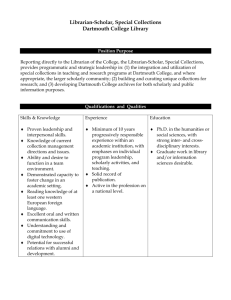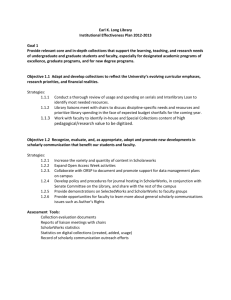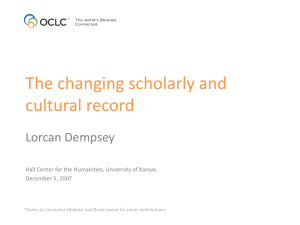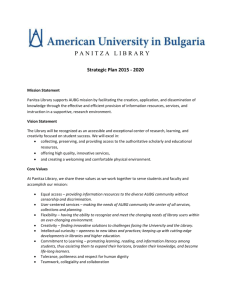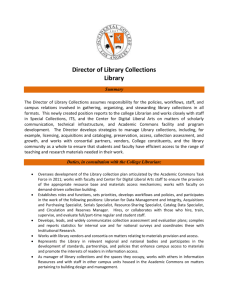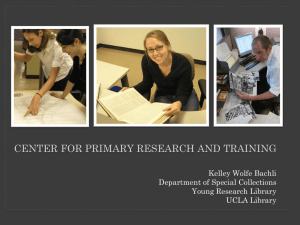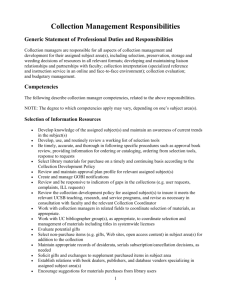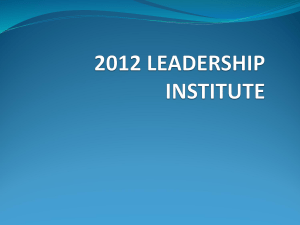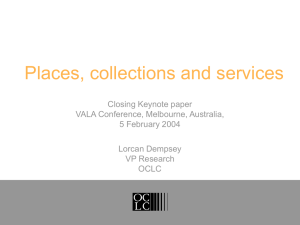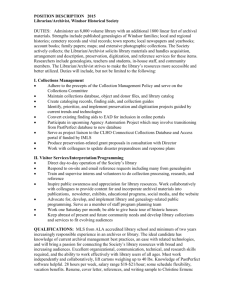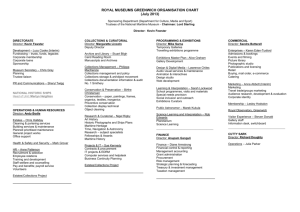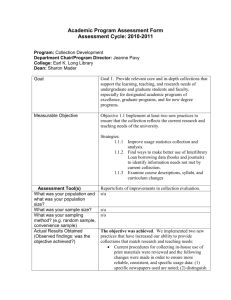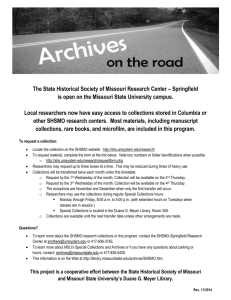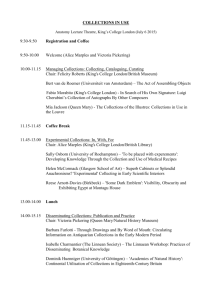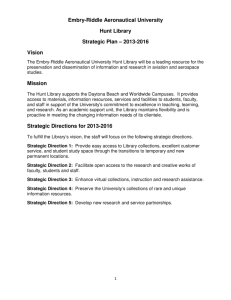doc
advertisement
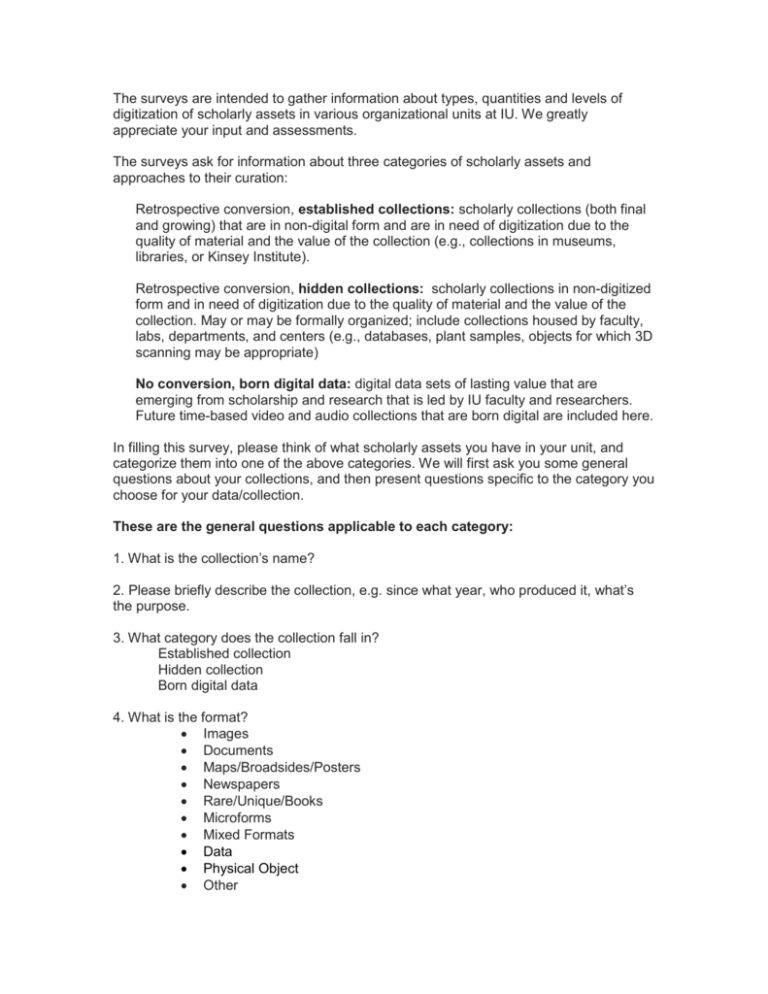
The surveys are intended to gather information about types, quantities and levels of digitization of scholarly assets in various organizational units at IU. We greatly appreciate your input and assessments. The surveys ask for information about three categories of scholarly assets and approaches to their curation: Retrospective conversion, established collections: scholarly collections (both final and growing) that are in non-digital form and are in need of digitization due to the quality of material and the value of the collection (e.g., collections in museums, libraries, or Kinsey Institute). Retrospective conversion, hidden collections: scholarly collections in non-digitized form and in need of digitization due to the quality of material and the value of the collection. May or may be formally organized; include collections housed by faculty, labs, departments, and centers (e.g., databases, plant samples, objects for which 3D scanning may be appropriate) No conversion, born digital data: digital data sets of lasting value that are emerging from scholarship and research that is led by IU faculty and researchers. Future time-based video and audio collections that are born digital are included here. In filling this survey, please think of what scholarly assets you have in your unit, and categorize them into one of the above categories. We will first ask you some general questions about your collections, and then present questions specific to the category you choose for your data/collection. These are the general questions applicable to each category: 1. What is the collection’s name? 2. Please briefly describe the collection, e.g. since what year, who produced it, what’s the purpose. 3. What category does the collection fall in? Established collection Hidden collection Born digital data 4. What is the format? Images Documents Maps/Broadsides/Posters Newspapers Rare/Unique/Books Microforms Mixed Formats Data Physical Object Other 5. Approximately, how many items does your collection have? 6. Is it organized and described by metadata? If Yes, what metadata do you use? 7. Who are the users of this collection? 8. Ownership/Restrictions: Percent of objects in the public domain ___% Percent of objects for which you have copyright responsibility ___% Hidden Collections 1. What would be the difficulty in digitizing the collection? 2. Is there any federal repository for this type of collection? An example of such repository is NIH Genbank where people deposit DNA sequences. 3. Who currently uses the collection? 4. What collection management software or system do you use for the collection? 5. If the collection were to be digitized, do you think it will potentially bring in new users and new research or education uses of the collection? 6. Indicate if you are aware of any reason that the materials should not be digitized, such as copyright or other legal restrictions, contractual, or ethical reasons, or issues of cultural sensitivity.
